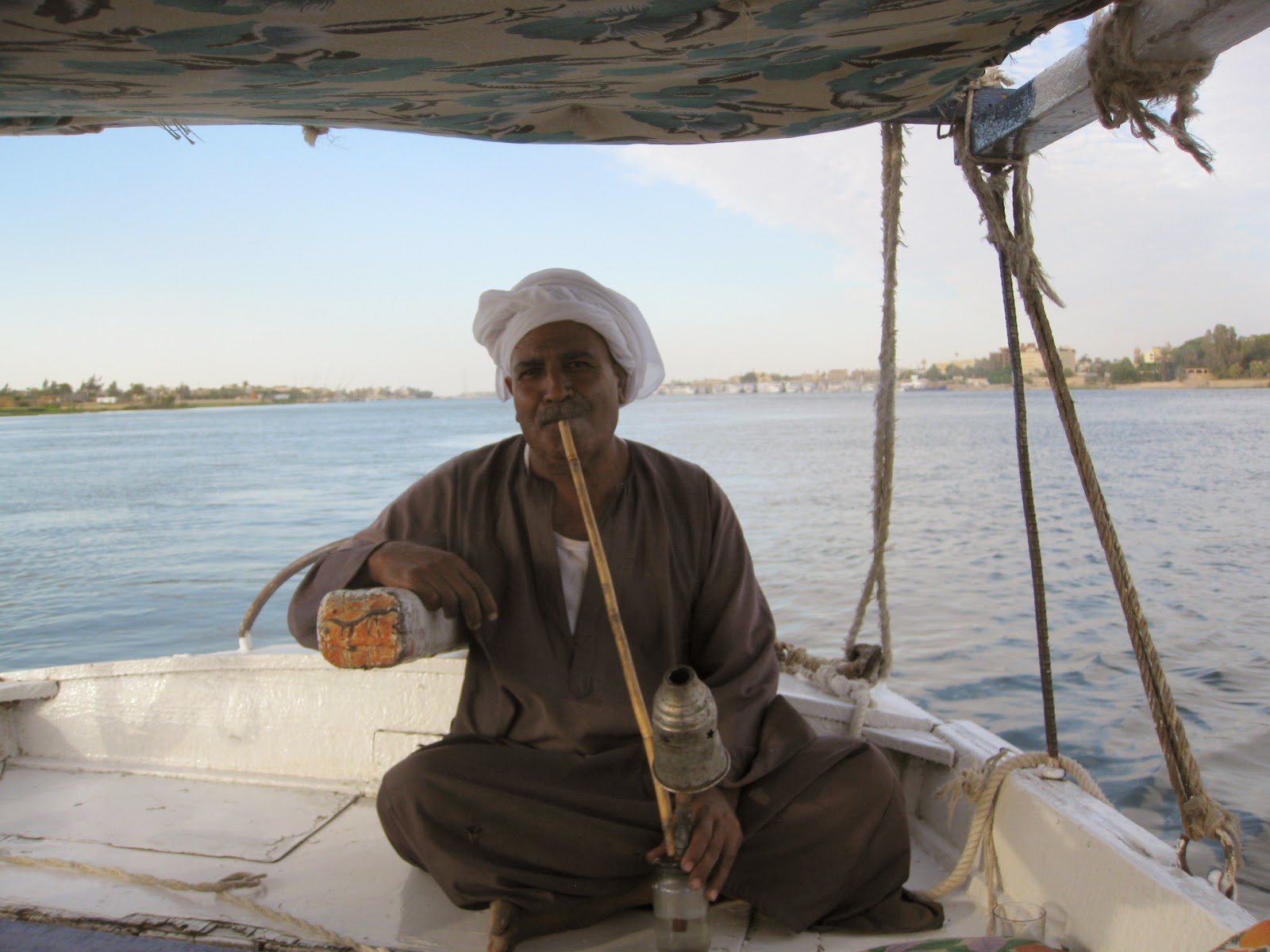We spent one night at Luxor's Winter Palace Hotel built in 1886 (just yesterday compared to the antiquities of Egypt.) We enjoyed the luxury of a beautiful room decorated as one would expect in a palace and the grounds with a swimming pool and lovely gardens.
We woke up at 3:30 am to head off for our next adventure--flying over Luxor in a hot air balloon.
Our eyes practically popped out as the balloon began to fill with heat in the early dawn. We watched as others scrambled over the edge of a 4 foot tall basket. There is no door, just a couple of holes for your feet as you climb/tumble in to the basket.
As we watched with wonder, balloons lifted into the sky. Finally we got into our basket, had a quick photo taken, and we were off the ground.
 |
| Looking straight down at the crew and truck. |
Why so early, you might ask: to see the sunrise, of course.
 |
| Hatsheput's Temple |
 |
| All along the Nile there is green with an abrupt edge to the desert. |
Each balloon pilot had a ground crew speeding along along city streets and dirt roads ready to help steady the balloon once landed, retrieve the passengers, and deflate the balloon and get all the equipment into a truck.
The tricky part was for the pilot to find a field without any power lines, trees, buildings to hit with an access road (and I use the term road loosely). Where we landed, a very disgruntled land owner came out to scold and yell at our team. Luckily for young ears, we couldn't understand the language, but the anger was clear.
Thrilling is about the only word to describe this 2 hour adventure. However, more was to come. . .
After a long afternoon nap, we boarded a felluca for an "up close and personal" experience on the Nile.
 |
| Our shisha smoking captain. |
 |
| Our guide goes by the name Shakespeare. |
 |
| Felluca rigging. |
 |
| An egret santuary. |
 |
| The promised sunset on the Nile. |
 And our day ended finding our beds on the night train to Cairo.
And our day ended finding our beds on the night train to Cairo.











































